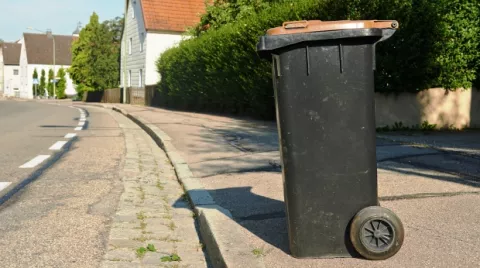
How do the biggest cities in the U.S. collect their residents' recyclables? The same way many towns across the country do these days -- in a single container.
A research report from Resource Recycling says that nine of the 10 largest American cities use single-stream recycling programs. Unlike multi-stream systems, which make people sort glass, paper, plastic and metal into separate buckets for curbside pickup, the single-stream approach allows you to toss everything in to one receptacle and call it good.
Among the big cities cited in the report, only New York still operates a multi-stream system. However the Big Apple -- which has an ambitious plan to cut its solid waste stream by 90% by 2030 -- expects to have a one-bin system in place in five years.
Simpler and cheaper
The move to single-stream recycling has been gaining ground in the U.S. for the past decade. Between 2005 and 2010, the number of single-stream recycling programs in the U.S. jumped from 20% to 64%, explained Bill Chameides, dean of Duke University's Nicholas School of the Environment. The reasons are pretty obvious:
- Single-bin recycling is simple and convenient. It encourages more participation and boosts the volume of material in the recycling stream.
- Waste collection operators and municipalities save money. Waste collectors can use single-compartment instead of two-compartment trucks. These are cheaper to operate, can be used for garbage collection as well recycling pickups, and allow for larger loads and fewer trips to the recycling center.
The average savings for a waste collector using single stream was 5-25%, according to a report from the Solid and Hazardous Waste Education Center at the University of Wisconsin.
Convenience at a cost
If there's a downside to single source recycling, it’s that the material recovery facilities that sort through and separate single-stream recyclables can’t salvage as much stuff as multi-stream systems do. These hulking industrial plants leave behind around 16% in what's called "residual" waste -- waste that must be disposed of in a landfill or incinerator. By comparison, multi-stream systems produce about 3% residual waste.
Single-stream recycling can also increase costs due to material contamination that results from comingled waste. Paper and glass are particularly affected. The added cost of transporting the heavier glass, and removing it from the mixed waste stream, has driven the cities of Harrisburg, Pa., and Charleston, W. Va., to tell residents to stop including glass in their recycling containers.
Smart solutions: Learn about Council Associate Partner Organic Energy Corp.'s one-bin MaxDiverter™ process that separates solid waste into 20 different material categories, making zero waste truly possible.
Related videos …
Veolia: Rostock -- A Second Life for Plastic Bottles
Enevo: Waste Collection for Smart Cities



